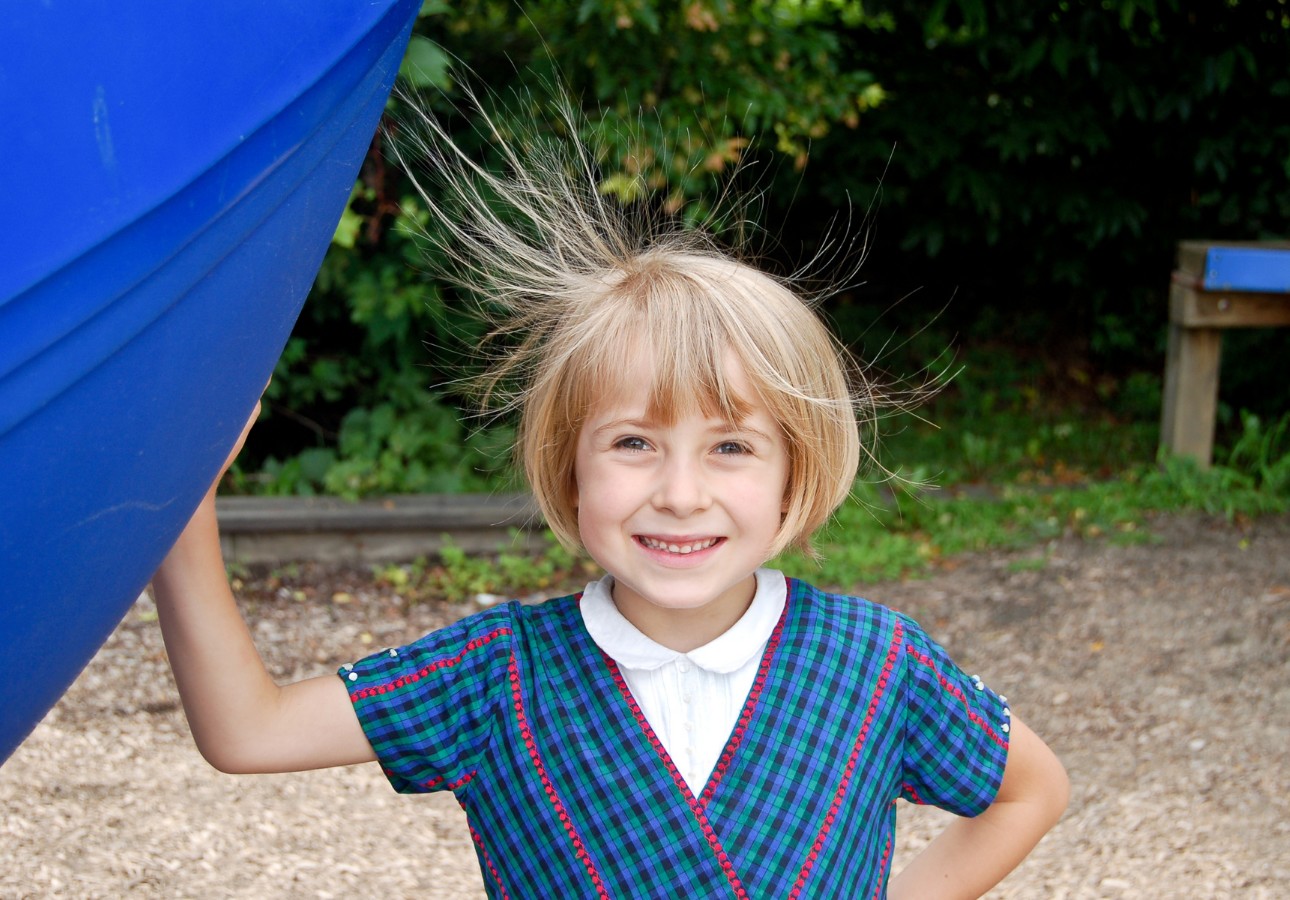If you have ever rubbed a balloon against your hair and seen it stand on end or if you have rubbed your feet on the carpet and then given your friend a shock, you have conducted electricity.
Electricity is a huge part of life allowing everything from lights to smartphones possible, but what is it?

How Does It Work?
Electricity is a form of energy that can build up in a place or flow from one spot to another. When it is stationary in one spot, it is known as static electricity and when it moves it is referred to as electric current. Electricity is the flow of tiny particles called electrons which flow from place to place and can travel through a variety of materials. These materials which conduct electricity are referred to as conductors. Conductors include materials such as metals, water and even air while materials that do not allow electricity to flow are called insulators. Common insulators include plastic, wood and rubber.

Everything in the universe is made up of atoms, and each atom contains smaller particles called protons, neutrons, and electrons. These protons and electrons are constantly spinning around each other. Protons have a positive charge and electrons have a negative charge and they are constantly pulling at each other; but if there are two positive charges or two negative charges, they will push each other away, or repel, just like magnets that have the same polarity. Electricity flows when the electrons (the negative charge) are pushed/pulled from atom to atom.
The History of Electricity

Since the time of the Ancient Greeks, people have experimented with electricity. They were interested in lightning, but the main thing studied was static electricity. Until the industrial revolution, scientists knew electricity existed but weren’t sure exactly how it worked and didn’t have a use for it. It was seen as a novelty rather than as something useful.
In the early 1700s Francis Hauksbee realised that spinning a glass globe produced electricity. However, as no one understood atoms and currents, he didn’t know what could be done with that electricity. This started to change when Alessandro Volta created the first-ever battery in 1801. Volta stacked disks of zinc and silver separated by cloth soaked in saltwater to create an electric current.

In 1820, a Danish professor of physics Hans Christian Ørsted was showing an electrical current to his class and realised that as he was showing the current, the needle on his compass was moving. Ørsted realised that there was a direct relationship between electric current and magnetic fields, and created Ørsted’s Law: “when a steady electric current passes through a wire it creates a magnetic field around it.”
Once this discovery was made, famous scientists like Faraday and Tesla built on Ørsted’s work, coming up with many uses for electricity. In the late 1800s, Thomas Edison recognised the need for affordable and easily available electricity for homes and buildings across the world. Edison created the first electric grid, transforming the world forever!
Static Electricity

Most objects are balanced between positive and negative charges and so remain neutral. When an object has a neutral charge, it is not conducting electricity. However, over time sometimes electrons can build up in one spot. These extra electrons are called static electricity. When this happens, the objects push or pull each other because they are no longer neutral. An example of this is rubbing a balloon against your hair. When you do this, electrons move from the balloon to the hair. This means that the hair has extra electrons, and because these are all negatively charged they try to get away from each other so your hair sticks up on end!
Electrical Current

When there are many moving electrons, an electrical current is created. This is the main type of electricity you encounter every day. Usually, this form of electricity is created using generators. Generators create a current by moving magnets past coils of wire which pushes the electrons through the coil. Current electricity can also be created using a chemical reaction – this is how batteries work.
Want to Learn More? Bring in Street Science!
If you want to learn more about electricity and electrical currents grab the Clip Circuit FM Radio Kit from the Street Science online store or book in our Year Six Energy & Electrical Circuits program and have Street Science out to your school. Not sure if our workshop is for you? Contact our friendly team who will answer any questions you may have.




